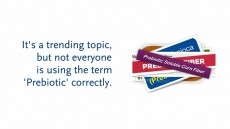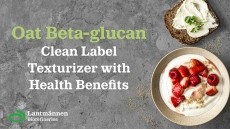General Mills seeks to patent low-cal pasta dough

Reducing the amount of flour alone won’t provide the structure necessary for extrusion. Thus, the inventors devised a dough comprising a cross-linked alginate gel (made up of a flour, alginate, polysaccharide textural modifier and water) that is then extruded into a divalent cation salt bath of calcium and/or magnesium cations, which allow for doughs made with lower flour content to retain their structure during extrusion or shaping and maintain a desirable texture during processing.
Alginate—with its high water absorption and gelling ability—is used in amounts ranging from about 0.5% by weight to about 4% by weight to replicate the properties provided by the higher flour content of traditional flour-based noodle formulations,” according to the filing. Moreover, The gelation, or crosslinking of the alginate, in dough composition allows the dough to retain the shape imparted by extrusion from a die. Textural modifiers (0.5% by weight to about 4% by weight) also contribute to improved final product texture and increased viscosity during processing.
Vegetables, fruits can help lower calorie content of flour
To help achieve the desired level of calorie reduction, “flour” (which can range from about 0% by weight to about 40% by weight) can be derived from many sources, including rice, wheat, soy, potato, corn, oat, barley, or grain; starch; resistant starch; legume powders; and vegetables and/or fruits. Vegetables and fruit may be added directly, whole or in pieces, and ground during processing, or added in the form of a puree. The textural modifiers can be made up of konjac glucomannan, guar gum, hydroxypropylmethycellulose, methycellulose, carrageenan, and xantham gum.
Before going into the cation bath and depending upon the formulation, dough mixtures can be prepared with a range of viscosities, from kneadable (biscuits, rolls) to pourable (pancake batters).
Moreover, the resulting dough accommodates a variety of shapes, including various noodle and pasta shapes. The dough can also be extruded and cut into couscous, grains of rice or sheetlike food products such as tortillas, and egg roll and dumpling wrappers. With the use of fruit or vegetable purees, chewable food products or fruit snack products can also be prepared.
The reduced-calorie dough process was invented by Peter Galuska, Eric Gugger and Christian Reiter. The patent was initially filed on May 24, 2013.
Application number: PCT/US2013/042562



















